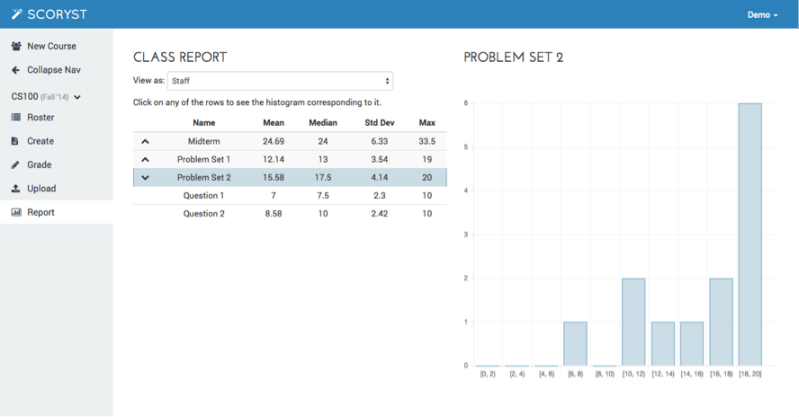One year ago, Catherine Lu ’14 MS ’15 and Karanveer Mohan ’15 MS ’15 launched Scoryst, a platform for student homework submissions and instructor feedback. Now, their product is already being used by 50 classes, including CS106X and CS103.
That’s not the first time that they’ve built a successful product — they previously built Free Food at Stanford and Fancy That with Amrit Saxena ’15 MS ’15 and Ayush Sood ’14 (Fancy That was recently acquired by Palantir). Lu and Mohan created Scoryst for part of their CS194 senior project, but then decided to develop Scoryst further after a couple of CS classes decided to adopt the product to grade assignments.

As former section leaders for the CS106 series, they understand the problems teachers and teaching assistants face when they need to receive and grade homework. All of the problem sets and assignments can be submitted online via Scoryst, where teachers and their assistants can easily edit grades, comment on assignments and navigate quickly through questions. In this way, the grading process becomes more efficient and can be done completely online.
“Our goal was to make grading more efficient and [to] help students [and] spend less time grading and more time working on more relevant issues,” said Mohan.
The advantage for students is that they can easily submit homework and quickly receive all feedback online. They can also find homework from previous classes, which is especially useful for coding assignments — code written for previous classes can still be useful in the future. What really makes Scoryst different, however, is that it is made by students for students. With no plans to monetize their product, Mohan and Lu believe that focusing solely on building a great product will put them ahead of their competitors. When asked about competitors, Mohan is quite confident.

“Most of our competitors are startups trying to monetize and make more money — they are not focused on the product. We are focused on making sure the students have the best experience possible. It’s not about the money, it’s not about anything else, and it’s very hard for them to compete with that,” explained Mohan.
Being in the education field with a B2B model is not simple. “Sales cycles are very long. Budgets are not huge — most of them go to salaries and projects that are not related to technology,” told Lu. Despite these obstacles, they have been able to grow steadily with very little marketing, which shows that many teachers really believe it is an efficient grading tool. Word of mouth marketing and strong recommendations from teachers have helped Scoryst grow. “People hear about us because either they used Scoryst as students and they are now teaching assistants or because other teachers have recommended us,” Mohan said.
Catherine Lu and Karanveer Mohan don’t have any plans to turn Scoryst into a startup anytime soon. They don’t plan to monetize the service and also don’t have a marketing strategy. In Silicon Valley, it is very common to think that every product that becomes successful has to end up becoming a business — just think of all the startups born from side projects that became popular, such as Product Hunt, Snapchat, Yik Yak or Yo. However, the hacker culture has been showing us the value of building products solely for fun or interest in the problem they solve. Does the life cycle of a product always have to include the business or organization aspect? Not really. Surprisingly, Scoryst’s focus on making a more efficient grading tool has helped them to build a great product that is being used in several classes at Stanford and at other universities.
You can talk to Lawrence at lmurata ‘at’ stanford.edu.
